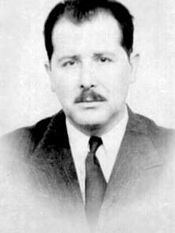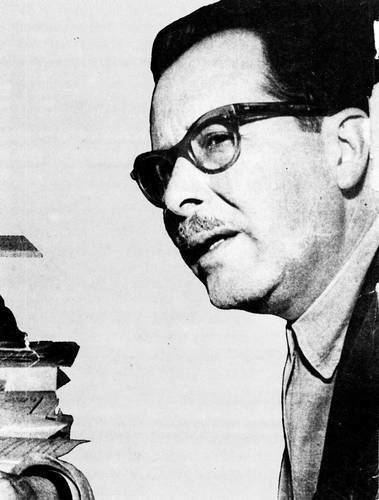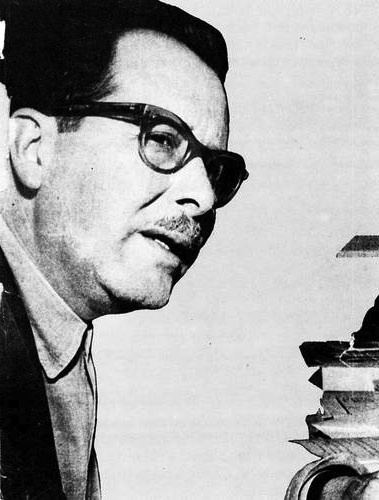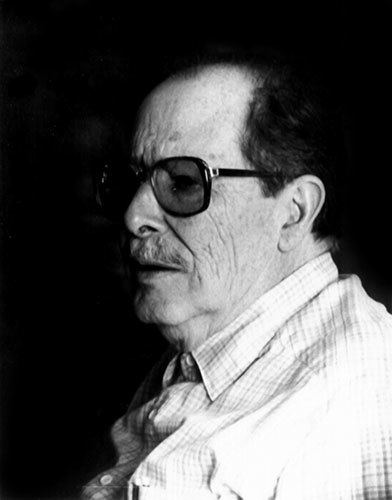Name Guillermo Haro Role Astronomer | Movies Asalto a la ciudad | |
 | ||
Died April 26, 1988, Mexico City, Mexico Spouse Elena Poniatowska (m. 1963–1988) Education National Autonomous University of Mexico Children Emmanuel Haro Poniatowski, Paula Haro Poniatowska, Felipe Haro Poniatowski People also search for Elena Poniatowska, Carlos Cores | ||
Homenaje dr guillermo haro ver 27 min
Guillermo Haro (March 21, 1913 – April 26, 1988) was a Mexican astronomer. He was the first person elected to the Royal Astronomical Society from a developing country.
Contents
- Homenaje dr guillermo haro ver 27 min
- El astr nomo guillermo haro lo mejor de la oveja el ctrica 2
- Life
- Family
- References

El astr nomo guillermo haro lo mejor de la oveja el ctrica 2
Life

Haro was born in Mexico City in 1913, where he grew up during the time of the Mexican Revolution. He studied philosophy at the National Autonomous University of Mexico (UNAM). He became interested in astronomy and because of his dedication and enthusiasm was hired in 1943 as an assistant at the newly founded Observatorio Astrofísico de Tonantzintla. In order to pursue his astronomical training he visited the U.S. and worked from 1943 to 1944 at Harvard College Observatory.

Upon his return to Mexico in 1945 he continued working at the Observatorio Astrofísico de Tonantzintla where he was responsible for the commissioning of the new 24-31-inch. Schmidt camera and where he became involved in the study of extremely red and extremely blue stars. In 1947 he started working for the Observatorio de Tacubaya of the UNAM
Guillermo Haro made many contributions to observational astronomy, especially with the Tonantzintla Schmidt telescope. Among them were the detection of a large number of planetary nebulae in the direction of the galactic center and the discovery (also independently done by George Herbig) of the nonstellar condensations in high density clouds near regions of recent star formation (now called Herbig–Haro objects). Haro and co-workers discovered flare stars in the Orion nebula region, and later on in stellar aggregates of different ages. His intense activity detecting flare stars continued till the end of his life.
Other major research projects carried out by Haro included the list of 8746 blue stars in the direction of the north galactic pole published jointly with W. J. Luyten in 1961. Work made with the 48-inch Palomar Schmidt using the three-color image technique developed at Tonantzintla. At least 50 of these objects turned out to be quasars (which had not yet been discovered in 1961). Haro's list of 44 blue galaxies, compiled in 1956, was a precursor to the work of Benjamin Markarian and others in searching for such galaxies. Haro also discovered a number of T Tauri stars, one supernova, more than 10 novae, and one comet.
Guillermo Haro was very influential in the development of astronomy in Mexico, not only by virtue of his own astronomical research but also by promoting the development of new institutions. In a more important aspect he defined modern astrophysical research in Mexico where he gave impulse to different initial lines of research and established general scientific policies. In 1959 he was the first person elected to the Royal Astronomical Society from a developing country. Amongst his students were Silvia Torres-Peimbert and Manuel Peimbert.
Family
In 1968 Haro married journalist and writer Elena Poniatowska and divorced in 1981, with whom he had three children: Emmanuel, Felipe, and Paula. He was previously divorced from his first wife, Gladys Learn Rojas. His parents were Ignacio de Haro and Leonor Barraza.
